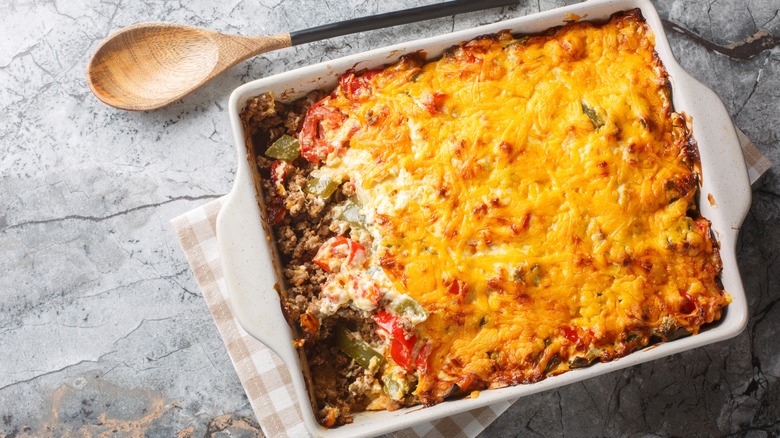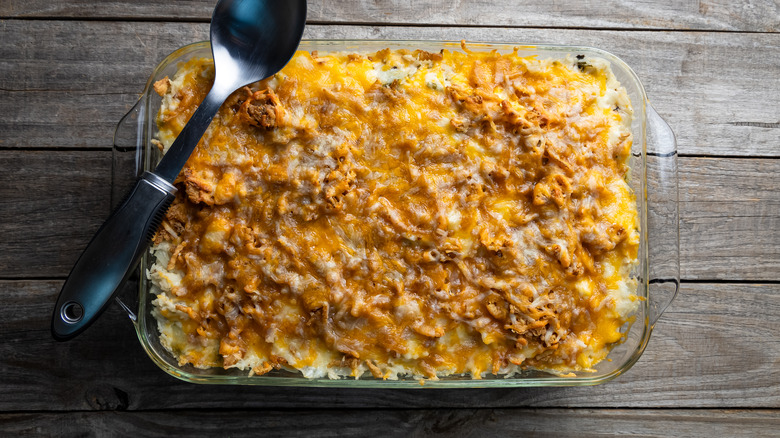The Casserole Meat Mistake You Might Be Making
Casseroles are often hearty, filling meals that let a variety of ingredients work together to form a cohesive whole. However, mistakes with a single ingredient can sabotage the entire dish. Vicky Hadley, food blogger and recipe developer at Little Chef Within, tells Food Republic that not browning meat is a major error many home cooks make.
"Browning meat before adding it to a casserole adds depth and helps prevent the final dish from tasting flat or greasy," says Hadley. "You can skip it ... when using rotisserie chicken." When you brown meat, avoid constantly stirring so it can develop the right color and allow excess juices to evaporate. Within the confines of a casserole, these juices may not cook off properly, leaving you with a soupy mess rather than a tender, flavorful pan of deliciousness. Additionally, browning triggers the Maillard reaction, which creates a satisfying roasted flavor regardless of the type of meat used, enhancing your recipe overall.
You should never add raw meat to a casserole, as it might contaminate other ingredients and you can't guarantee it will reach a food-safe temperature. Even if you bake your casserole at a high temperature, you must cook your meat separately to fully develop its flavor before adding it to your dish. Casseroles are meant to be easy, but while there are plenty of shortcuts, cutting corners can ruin the end result.
Other common casserole mistakes
Casseroles have a wide margin of error — you can often get away with overcooking them slightly or substituting ingredients, like swapping out potato chips for crushed crackers to give your tuna casserole the crunch it deserves. However, Vicky Hadley warns that "using too much liquid, not seasoning each layer, not using the right size casserole for the recipe, or cutting into the casserole too soon after baking" are all major mistakes.
Just as skipping the browning step can make a casserole watery, using too much liquid leads to an even worse outcome. Some liquid will evaporate, but because casseroles are typically dense, they retain much of their moisture. Since that density is built from layers of ingredients, it's also essential to season each one. Many pro chefs agree that the biggest difference between home cooks and restaurant chefs is seasoning. Make sure to do it in stages to maximize the flavor of every component.
Using a dish that's too large dries out your casserole, while one that's too small can prevent it from cooking through properly. The right surface area ensures a gorgeously browned top, the proper ratio of moisture, and gives every ingredient enough time and heat to develop its ideal taste and texture. But even with the right dish, your meal can be ruined if you don't let it rest. Cheese-based recipes, like a creamy million dollar chicken casserole, need time to cool and set properly. Skip this step, and you'll be reaching for a ladle instead of a spatula.


